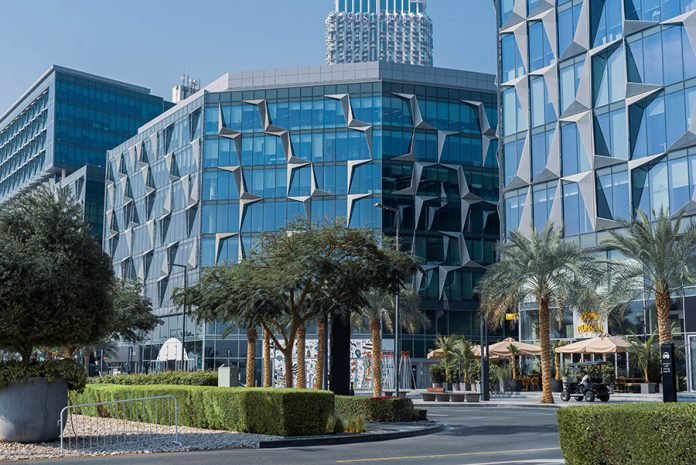This year, Dubai Design Week is using its platform to emphasize how design can be the solution to social and environmental changes, presenting numerous picture-worthy designs for visitors to engage and enjoy.
The event, running from November 7 to November 12, has transformed the Dubai Design District with large-scale installations, exhibitions, and an expanded commercial focus on Downtown Design, a fair that showcases the best ideas.
One of the many eye-catching displays is the winner of this year’s Urban Commissions, an annual competition that invites new takes on outdoor furniture.
Designest reimagines pigeon towers from the peninsula as a structure that serves both humans and birds. The towers are made of styrofoam fixed onto a steel structure, with an exterior treated with concrete and recycled Glass Reinforced Plastic. The pigeon holes utilize 3D-printing technology and are made using plant-based polylactic acid mixed with wood powder.
Upon entering the district, you are welcomed by the installation by Kapil Bhimekar’s ‘The Reality Check’, where the artist talks about exploring the idea of real, physical connections between people. It’s a big inflatable artwork made from recycled materials.
Bench-like protrusions within the towers, meanwhile, make the towers a comfortable place to sit.
One of the most colossal installations at Dubai Design Week is Abdalla AlMulla’s Of Palm. The installation comes as part of the Abwab initiative, which aims to bolster cultural exchange through design and architecture.
Now in its 10th year, Downtown Design marks its highest rate of participation, with more than 320 designers, studios, and collectives involved.
But Mette Degn-Christensen, fair director of Downtown Design, isn’t concerned about the number, saying she instead focuses on “what we’re able to do for the creative community, on the commercial side as well as on emerging designers”.“What I love is seeing people collaborating as a result of having met here or doing projects together,” she says. “Our very core mandate is a real emphasis on quality design, which does not necessarily have to mean expensive, but contemporary design.”
The platform, Degn-Christensen says, is also acting as a springboard for large international companies that haven’t yet broken into the regional market to showcase their products.

